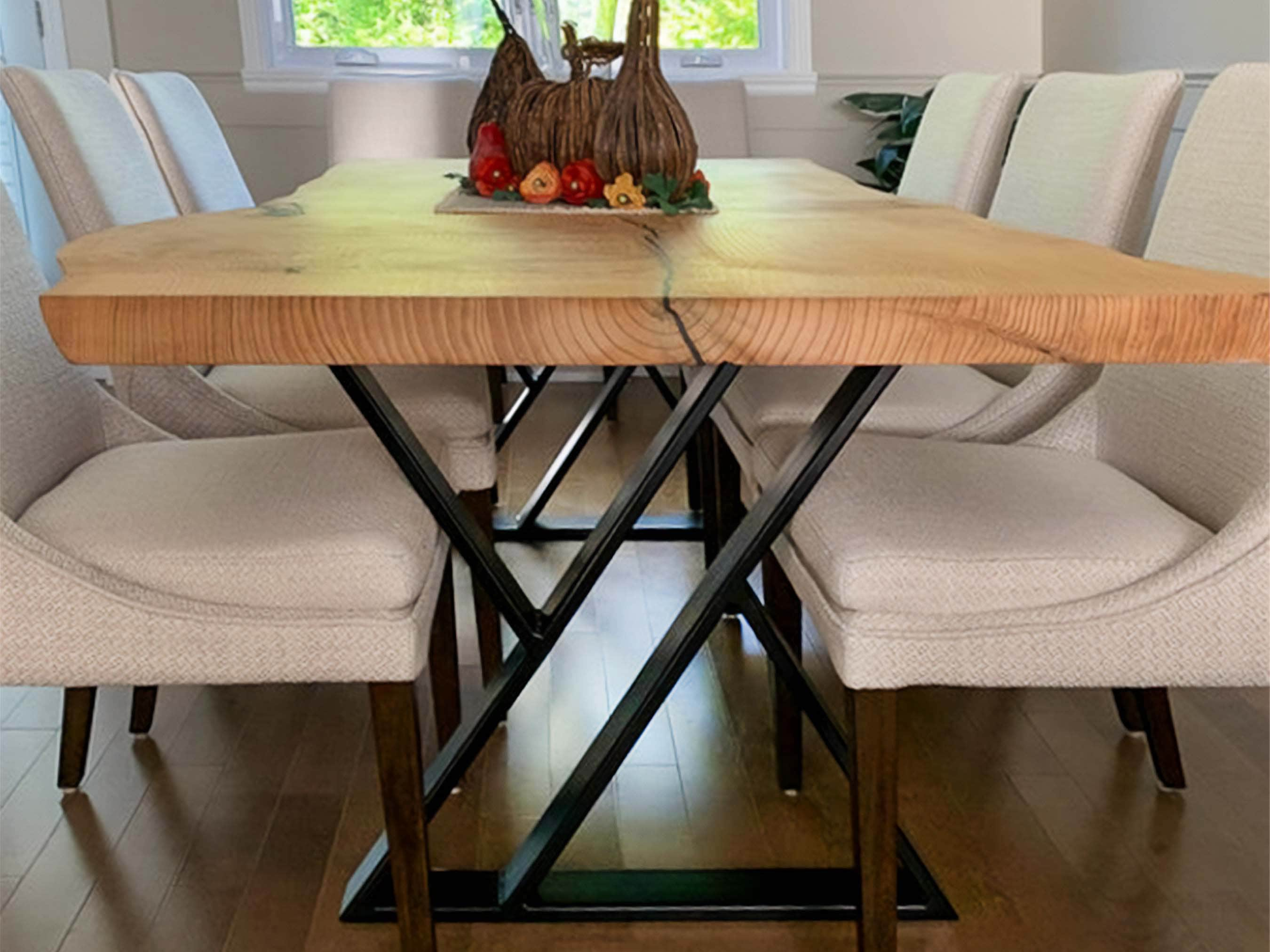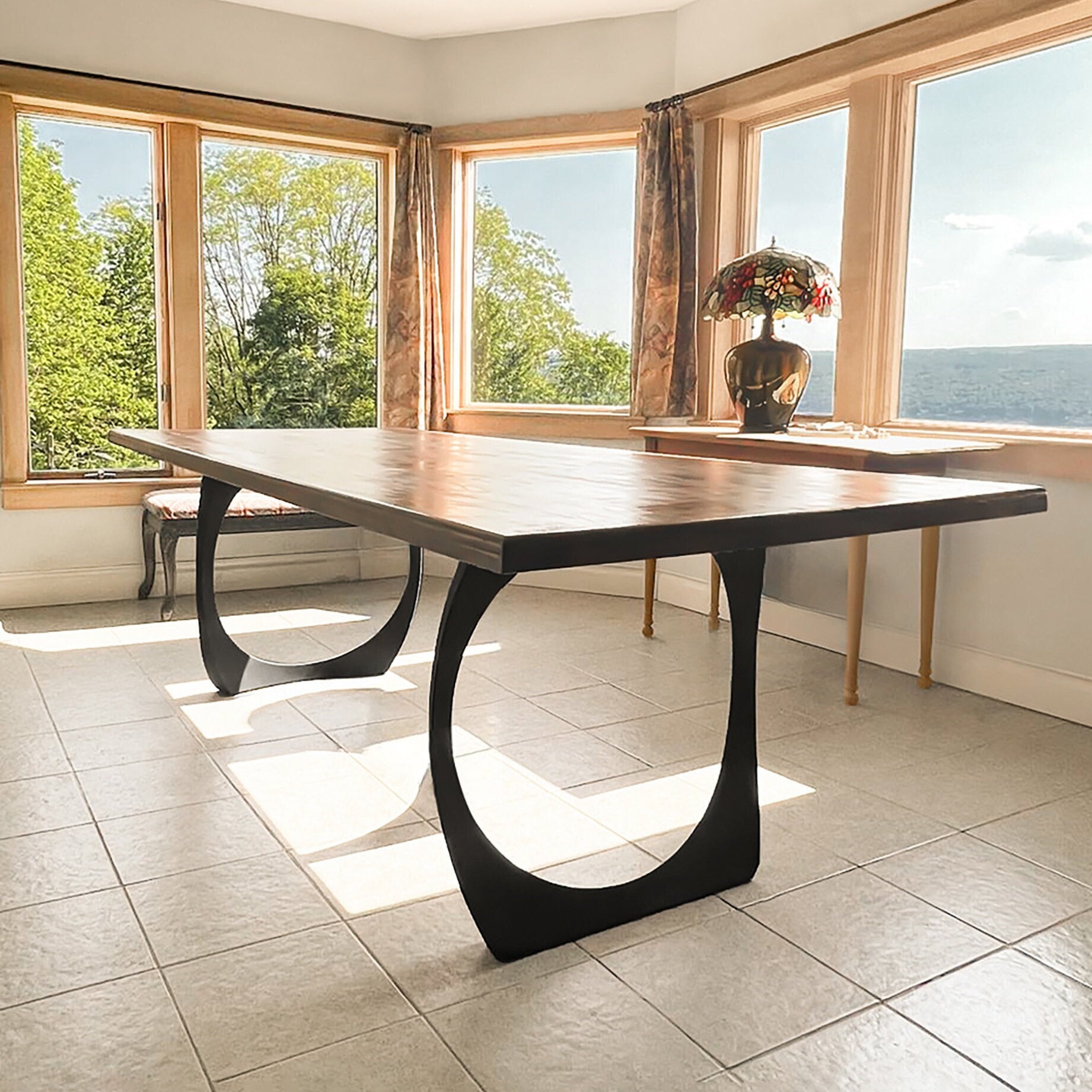Checking Out Different Designs for Dining Room Table Legs to Match Your Visual
Checking Out Different Designs for Dining Room Table Legs to Match Your Visual
Blog Article
A Thorough Consider Dining Table Leg Styles: Finding the Ideal Suit
Picking the ideal eating table leg style is critical for both aesthetic charm and practical performance. For those with bigger tables, trestle legs guarantee tough assistance, whereas barrette legs introduce a mid-century contemporary ambiance with their minimal layout. The x-shaped legs blend contemporary design with enhanced stability.
Typical Four Legs
Among the different types of eating table leg designs, the typical four-leg design remains an ageless option for lots of houses. This timeless configuration uses an unified mix of capability and aesthetic appeals, making it a perennial favorite. Four legs offer well balanced support, making sure the table stays steady and with the ability of birthing considerable weight. This is especially helpful for families that often hold big events or utilize their table for multiple objectives, such as job or crafting.
From an aesthetic perspective, the typical four-leg layout can be quickly adapted to numerous indoor styles. Whether crafted from timber, steel, or a combination of products, these legs can be delicately carved, sleek and minimalistic, or anything in between. Their convenience enables them to complement both rustic and modern settings seamlessly.
In addition, the uncomplicated structure of the four-leg layout assists in ease of activity and placement within a space. Unlike more facility bases, this style decreases obstructions, providing adequate legroom for diners. In recap, the conventional four-leg dining table leg design weds enduring beauty with sensible performance, making it an astute option for those looking for both kind and function in their eating furniture.
Stand Base
Commonly commemorated for its elegant and space-efficient style, the pedestal base is a recognized choice to the traditional four-leg configuration in dining table leg styles. Without corner legs, diners are paid for better liberty of activity, making it a perfect option for round and oval tables that promote more intimate and inclusive events.
The main column itself uses a canvas for elaborate designs and imaginative expressions, adding an element of aesthetic interest beneath the table. In recap, the pedestal base incorporates performance with design, making it a fine-tuned and practical alternative for diverse eating atmospheres.
Trestle Legs
Trestle legs provide a durable and timeless structure for dining tables, identified by their horizontal cross-bracing and strong support light beams. Originating from middle ages times, this design has actually evolved yet maintained its vital framework, making it a perennial fave in both conventional and modern settings. The central trestle light beam, typically sustained by two or even more vertical messages, supplies outstanding stability, permitting bigger table lengths without the requirement for added legs.
A significant benefit of trestle leg tables is the enough legroom they provide. Unlike tables with 4 edge legs, the absence of obstructions at the table's sides gives unimpeded area for chairs and restaurants, enhancing comfort and availability. This makes trestle tables ideal for fitting bigger celebrations, whether in a dining-room or a banquet hall.
The visual flexibility of trestle legs is notable. Readily available in a variety of materials such as wood, metal, and composite, they can be ended up to enhance a vast array of interior styles. From rustic farmhouse to smooth contemporary layouts, trestle legs can be tailored to match specific preferences. Their enduring appeal and useful benefits make trestle legs an engaging option for those seeking both style and practicality in their table.
Barrette Legs

The charm of barrette legs depends on their simplicity and adaptability - dining room table legs. Readily available in a variety of products, consisting of steel and brass, they can be finished in various shades to enhance various interior styles. Whether coupled with a rustic visite site wood table top or a contemporary glass surface area, barrette legs easily blend functionality with a touch of vintage appeal
Durability is another significant attribute of barrette legs. Regardless of their delicate appearance, these legs are engineered to bear substantial weight, making sure the table continues to be secure and secure. Additionally, they are relatively easy to install, making them a prominent option for DIY lovers and expert furniture makers alike.
X-Shaped Legs

Constructed from materials such as steel, timber, or a combination of both, X-shaped legs can be customized to match various style choices. Steel legs frequently provide a streamlined and industrial feel, perfect for resource loft-style apartments and contemporary eating rooms. On the other hand, wooden X-shaped legs use a warmer, more rustic appeal, appropriate for farmhouse or diverse insides. The adaptability in materials enables home owners to customize their dining tables to better fit their general layout system.
Moreover, the engineering behind X-shaped legs ensures even weight distribution, reducing the danger of wobbling and improving sturdiness. This makes them especially appropriate for bigger table the original source that need extra support. Basically, X-shaped legs blend useful engineering with modern aesthetic appeals, making them an ageless option for diverse dining environments.
Verdict
A thorough understanding of eating table leg designs exposes the unique qualities and benefits of each layout. Typical 4 legs use stability and timeless allure, while stand bases offer legroom and a streamlined look. Trestle legs make certain durable support for bigger tables, and barrette legs introduce a mid-century modern visual. X-shaped legs integrate contemporary layout with boosted stability. Selecting the ideal leg design guarantees both useful and visual fulfillment in any eating area.
Report this page